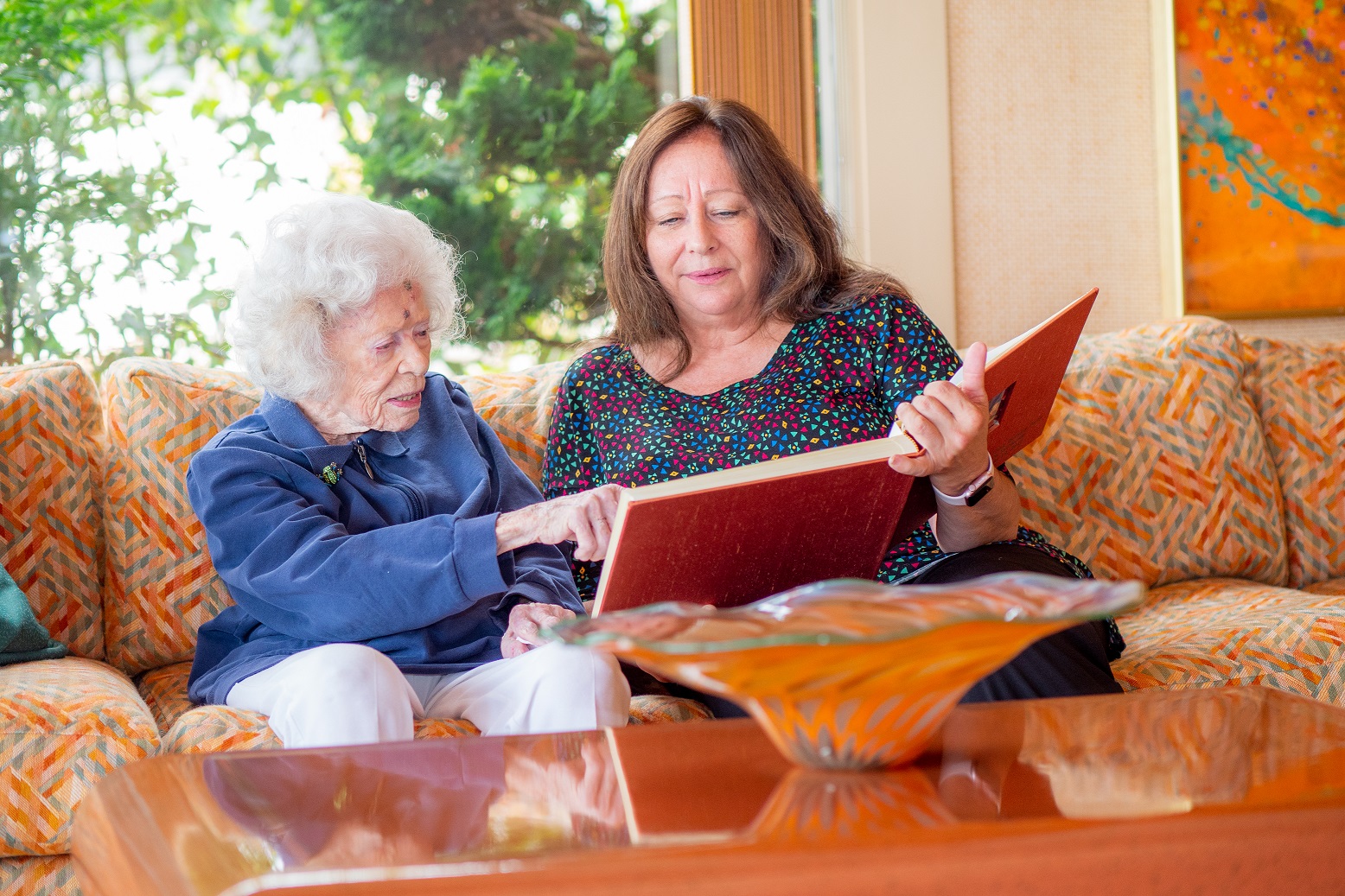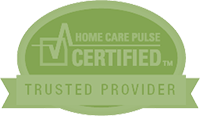Live-in Care Overview
Live-in care is 24-hour around-the-clock care aimed at keeping the client at home. This form of care provides non-medical assistance for an individual who may need safety and supervision, transportation, housekeeping, medication reminders, and assistance with activities of daily living (ADLs).
Caregiver Schedule, Meals, and Transportation:
The live-in caregiver is required to have a minimum of eight hours of downtime within a 24-hour period. Five of the allotted eight hours are consecutive and uninterrupted time dedicated to sleep. This is easiest for a client that has a predictable sleep schedule at night.
The caregiver is given appropriate sleeping accommodations which could include a bed, roll-away bed, pull-out couch, couch to fit caregiver size, etc. The live-in caregiver is also given access to a private sleeping area, which could include a bedroom or private sleeping area away from the client. Clients are responsible for providing three meals a day to the caregiver. Clients can opt not to provide meals in exchange for paying a $15/day meal stipend, which is reimbursed to the caregiver. The caregiver must have their own transportation to and from the client’s home.
Community Outings or Traveling
Transportation for appointments, errands, shopping, etc. is arranged with the client or client’s family and is typically dependent on the client’s care needs. The client is often able to travel with the caregiver in the caregiver’s car. In some cases, the family will arrange transportation, or have groceries delivered. All of FHRC’s caregivers have their own insured vehicle to make shopping and transportation easier. Often, live-in caregivers stay with clients when family members need or wish to travel out of town.
Development of Care Plans
All provided services and care are outlined through the details of a care plan. A care plan is a comprehensive description of the client’s preferences, personality, and resources based on their unique lifestyle and health needs. It is created by our Client Care Supervisors in collaboration with the client or client’s family. The care plan may be updated or modified at any time, with consent from the client or family, in accordance with changes in health or lifestyle that may occur during the course of care. Having a caregiver to monitor daily changes in care can be invaluable for knowing how to best proceed with the care strategy.
Cost of Live-in Care:
Live-in is charged as a daily rate, rather than hourly. This makes it much more affordable for around-the-clock care than hourly care. The costs of live-in care are unique and specific to the client’s needs and where they live.
Candidates for Live-in Care:
- Recovering from a sickness or illness
- Transitioning from one level of care or living situation to another
- Have limited mobility
- Isolated and withdrawn from others, or lives too far away from family or friends who can help
- Feeling overwhelmed taking care of themselves or spouse/family is overwhelmed or wishes to still be the ‘partner’, not the full-time caregiver
- Suffering from Alzheimer’s or dementia
- Wishes to have companionship and consistency
- Needs limited exposure to others (immune-compromised, dementia, etc)
- Is determined to stay in their current living situation/ doesn’t want to move
- Lives with family but family needs help
- Anyone who wishes to have someone in their home at all times or for extended periods of time
Benefits of Live-in Care:
- Client remains in their home, which most individuals prefer
- Keeps them comfortable, improves quality of life
- Improved client safety
- Improved nutrition through dietary management and meal preparation
- Ease with medication management and reminders to take medication as prescribed
- Improved socialization, especially for elders who are isolated
- Decreases in stress, anxiety, and loneliness through companionship
- Assistance with responsibilities like doctor’s visits, running errands, etc.
- More affordable for clients who require around-the-clock care
- Promotes a stronger bond between client and caregiver
- Offers consistency with schedules and care
- Utilizes fewer caregivers, and limits the number of caregivers working with the client on a daily basis
Evaluating Need for Live-in Care:
Families who are considering home care always have some basic questions. Among them are:
- What do I need help with?
- How much help do I need?
- How often do I need help – how many days per week and how many hours?
The answers to these questions are driven by the needs and preferences of the client, the amount and level of care the family feels comfortable with, financial considerations, and more. Many families find that, after researching the options (including moving to a retirement or assisted living facility), the best option is live-in care. Our client care managers will help your family navigate these choices and determine the best fit.
Considerations include:
- Hours – How much care is needed, and for how long?
- Diet – Does client have special dietary needs or limited ability to plan and cook healthy meals?
- Transportation – Does client have the ability to travel to doctor’s appointments, run errands, get groceries, etc.?
- Mobility – Does client need assistance getting out of bed, bathing, or moving around the house?
- Medication management – Can client remember to take medication, or do they forget and take more than prescribed?
- Memory loss, dementia – Does the client have memory loss issues that interfere with managing basic needs?
- Other skills – Blood pressure, blood sugar testing, etc.
For more information
Please Contact Us if you’re interested in live-in care, or exploring your options. Phone consultations and in-home assessments are free of charge. As always, we are a resource for our communities. This includes general counsel for anyone in need.






